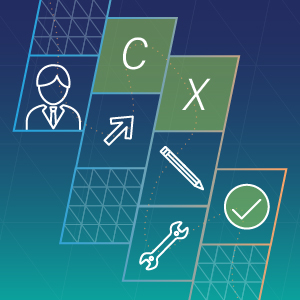Taking a page out of the private sector’s book, government agencies are digitally transforming to improve customer experience (CX) and increase customer engagement.
This transformation was mandated by the 2018 21st Century Integrated Digital Experience Act (IDEA), which aims to improve the digital experience for citizens and increase efficiencies for government employees. The law was further refined by the US Web Design System (USWDS), comprehensive design standards released in January 2020.
Let’s look at what these changes mean for government agencies and the citizens they serve. We will also examine the challenges they pose and how technology can ease the transition.
 21st Century IDEA
21st Century IDEA
The private sector spent the past two decades optimizing its internet presence and CX, and consumers have come to expect a certain level of service and experience from all websites.
Government sites and apps proliferated at the same time — in 2019, there were over 14 billion sessions and 38 billion page views on federal sites. However, there were no federal guidelines compelling agencies to offer web experiences and services that met a base standard. The reputation of government sites subsequently suffered.
In response to constituent demand for better experiences, the 21st Century IDEA was born. The law mandates things like:
- Using electronic signatures
- Offering mobile-friendly digital options for paper-based forms
- Prioritizing CX in the federal IT strategy
- Making government sites accessible to individuals with disabilities
- Having a search function
- Ensuring government sites have a consistent appearance
- No overlap or duplication of legacy sites
The New Standards of Design
The USWDS increased focus on citizen interaction, ensuring all websites and applications are designed from a user-centric perspective. It lays out five key design principles:
- Start with real user needs. This principle brings user interface and UX exploration to the forefront. Instead of having design teams make decisions based on intuition, every experience is designed based on documented customer need.
- Earn trust. Constituents must trust the security and reliability of government sites along with the relationship they have with the specific government entity.
- Embrace accessibility. As part of the Americans with Disabilities Act, designers must account for basic design considerations (e.g., color and text size) as well as CX considerations (e.g., making sites accessible to screen readers for the visually impaired).
- Promote continuity. Maintaining consistency through services over time and across agencies is a massive UX challenge, especially given the number of government agencies out there.
- Design must demonstrate that the agency has listened to the audience — understanding the needs of users, their frequency of usage, and their reliance on processes — to prioritize where to make digital improvements.
Challenge Accepted
The challenges of the 21st Century IDEA are consistent with the typical government sector concerns: what’s currently in place, silos and fracturing due to SLAs, outdated technology and processes, and red tape for approvals. There are also some digital-specific concerns, such as:
- Privacy when providing more intuitive, personalized digital experiences via cloud technology
- Transitioning to cloud, particularly transitioning legacy systems for the digital experience
- Measuring effectiveness of intangible goals like citizen engagement and brand improvement
Technology Easing the Transition
Technologies like these are making the transition to improved digital services easier and more effective:
- Open source software (e.g., Drupal) that adds automation and machine learning for flexibility, customizability, scalability, and security
- Analytics that allow government agencies to use data to determine and support decisions
- Tech that digitizes federal paperwork, which is imperative given that one of the IDEA’s key goals is to digitize federal forms
- fedRAMP-certifed platforms for the cloud to ensure security assessment, authorization, and monitoring
- Identity management, authentication, and verification software to ensure privacy when passing people’s credentials
The Five-Year Impact
Five years is a long time in tech, but it is possible to make intelligent guesses about where we are headed.
The near future will hold more engagement in agency missions and governments, with all people empowered to participate no matter their abilities, devices, schedule, or location. Looking at the five-year timeframe, services could engage citizens to educate and inform them, allowing the government to help more people across the board. By creating more outwardly focused agencies, we are creating a stronger and better democracy.







